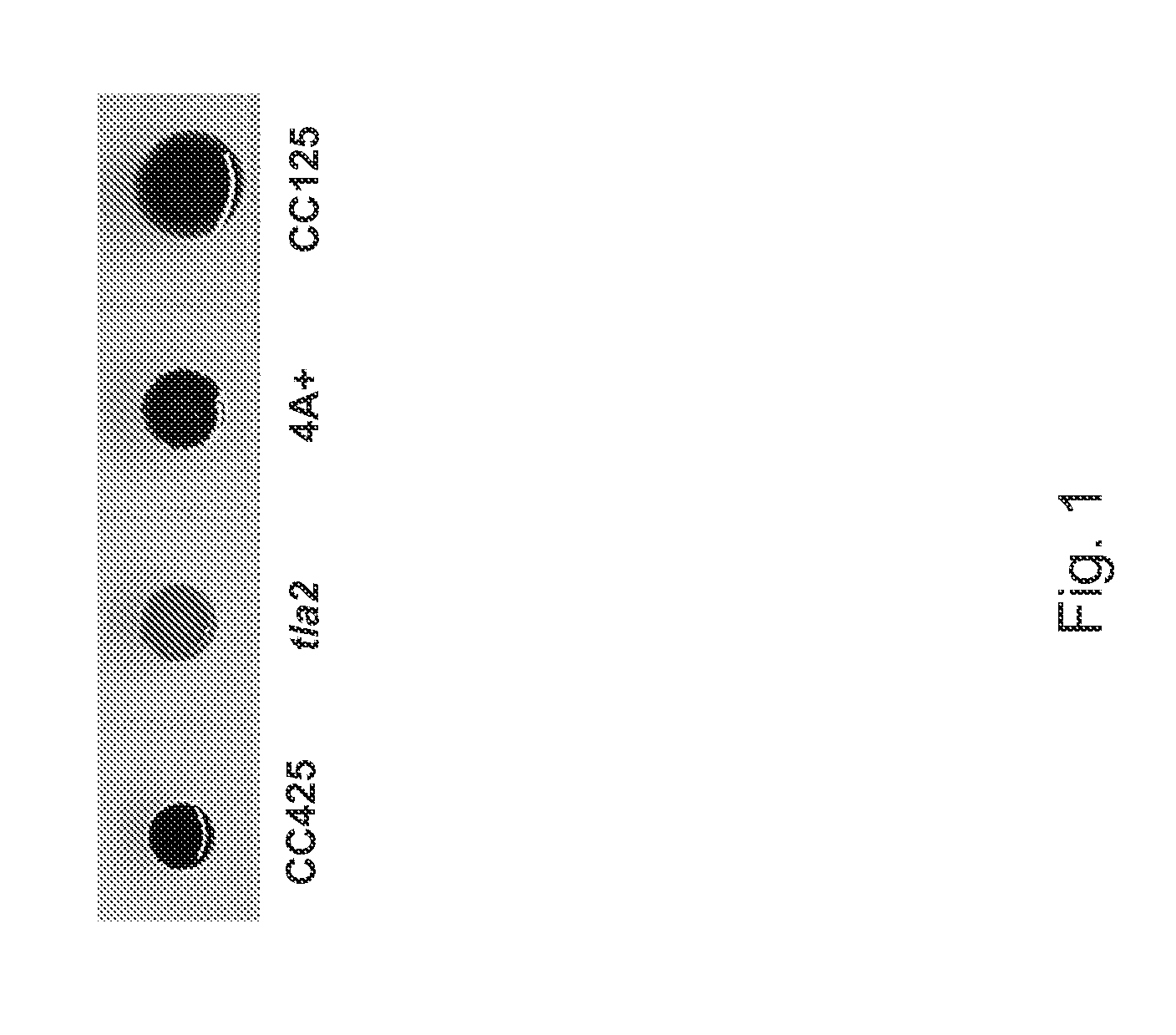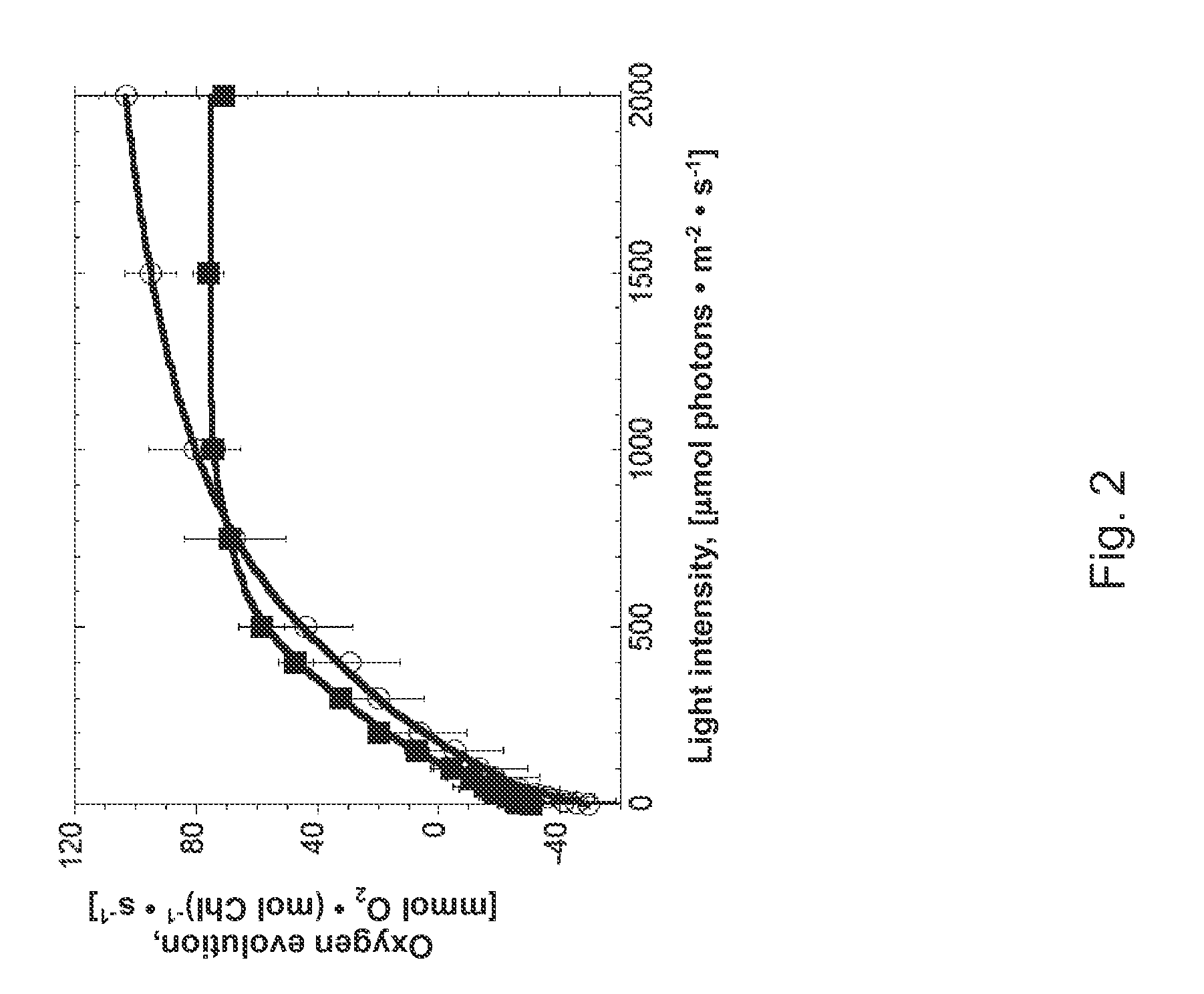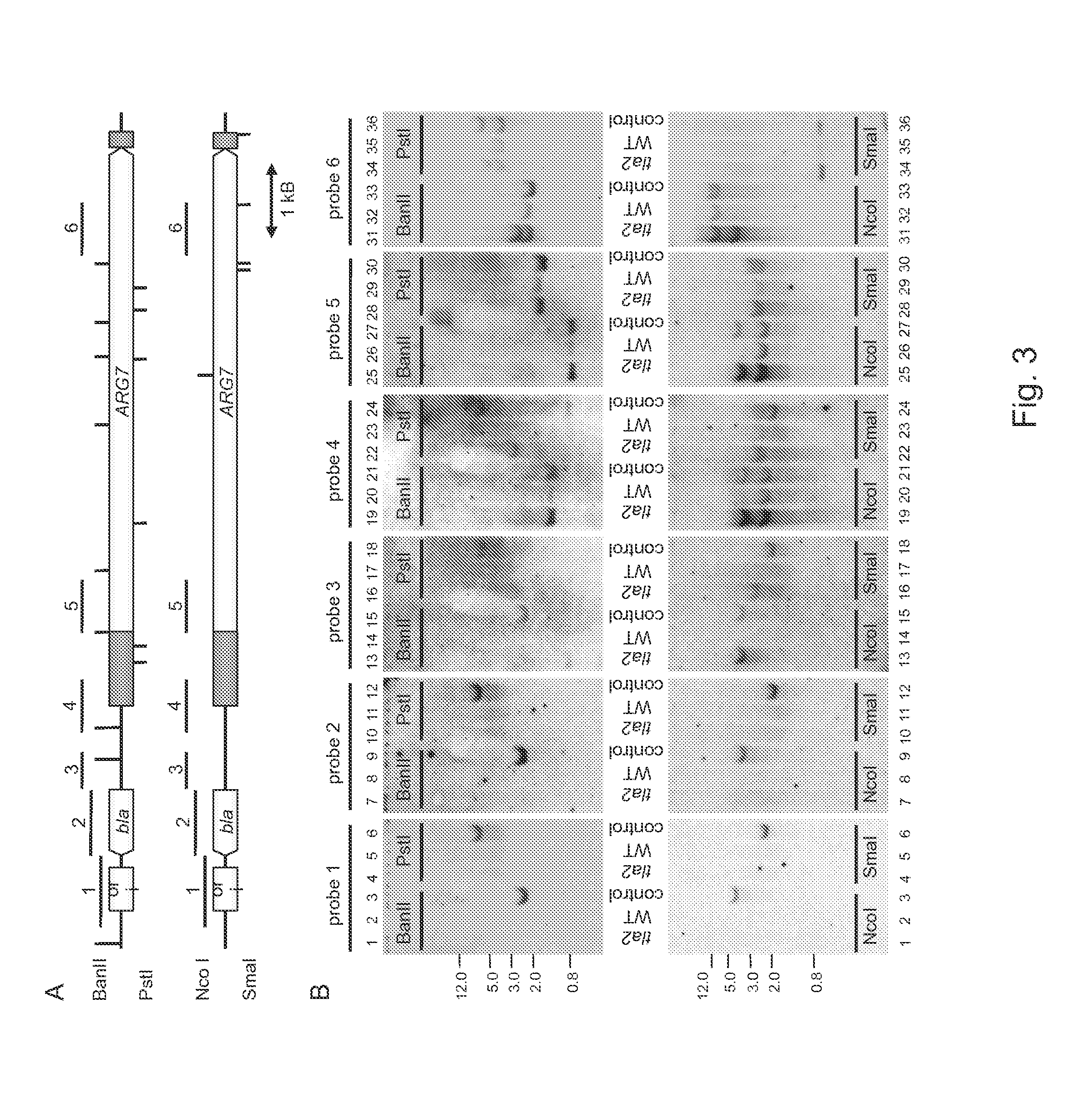SUPPRESSION OF TLA2-CpFTSY GENE EXPRESSION FOR IMPROVED SOLAR ENERGY CONVERSION EFFICIENCY AND PHOTOSYNTHETIC PRODUCTIVITY IN ALGAE
a technology of applied in the field of suppression of tla2cpftsy gene expression for improving solar energy conversion efficiency and photosynthetic productivity in algae, can solve the problems of large size of chl antenna and unrecognized lhcs, and achieve the effect of enhancing the yield of photosynthetic productivity
- Summary
- Abstract
- Description
- Claims
- Application Information
AI Technical Summary
Benefits of technology
Problems solved by technology
Method used
Image
Examples
example 1
Isolation of C. reinhardtii Strains with a Truncated Light-Harvesting Antenna Size (Tla Mutants)
[0091]A library of over 15,000 transformant stains was generated via DNA insertional mutagenesis of C. reinhardtii strain CC425 with linearized pJD67 plasmid (Davies et al., 1994). Exogenous DNA insertion into the genomic DNA of C. reinhardtii occurs randomly, occasionally interrupting nuclear-encoded genes, thus causing mutations. Transformant strains were initially isolated as arginine autotrophs, a property conferred upon transformation with pJD67 plasmid, as it contains a functional ARG7 gene (Davies et al., 1996). Arginine autotroph strains were screened as previously described (Polle et al., 2003). and also by measuring the Chl a / Chl b ratio of colonies in order to identify putative truncated light-harvesting antenna (tla) mutants. Out of the initial 15,000 transformants, six strains displayed a substantially higher Chl a / Chl b ratio than the corresponding parental wild type, indica...
example 2
Characterization of the Tla2 Mutant: Pigment Content and Composition
[0092]Cells of the tla2 strain, when cultivated as single cell colonies on agar, displayed lighter green coloration than their wild type counterparts (FIG. 1). Biochemical analysis showed that, on a per cell basis, the tla2 strain accumulated only about 20-25% of the chlorophyll present in the wild type. It also showed an elevated Chl a / Chl b ratio, suggesting lower amounts of the Chl a-b light-harvesting complex in the mutant (Table 1). The cellular content of Chl in wild type and tla2 was measured upon growth under two different light conditions: low light (30 μmol photons m−2 s−) and medium light (450 μmol photons m−2 s−1) (Table I). Four wild type strains were used as controls for this analysis. Strain CC125 (ARG7, CW+) is the parental wild type strain of CC425 (arg2, cw15). Strain 4A+ (arg2, CW+) was used for backcrosses with the tla2 mutant. Strain CC503 (ARG7. cw−), was also employed, as this was applied by t...
example 3
Functional Properties and Chl Antenna Size Analysis of Wild Type and Tla2 Mutant
[0094]The functional properties of photosynthesis and the Chl antenna size of the tla2 mutant were assessed from the light-saturation curve of photosynthesis, i.e., from the relationship between light intensity and photosynthetic activity measured under in vivo conditions (Melis et al. 199; Polle et al., 2000; Polle et al., 2003). Light saturation curves of photosynthesis were measured with wild type and tla2 following cell acclimation to photoautotrophic growth at medium irradiance (growth at 450 μmol photons m−2 s−). At zero incident intensity (in the dark) the rate of oxygen evolution was negative (FIG. 2). reflecting oxygen consumption by the process of cellular respiration (absence of photosynthesis). Measured on a per Chl basis, the rate of dark respiration of the tla2 mutant was about 50% greater than that of the wild type (FIG. 2). This higher rate of respiration is partially due to the lower Chl...
PUM
| Property | Measurement | Unit |
|---|---|---|
| Tm | aaaaa | aaaaa |
| Tm | aaaaa | aaaaa |
| temperature | aaaaa | aaaaa |
Abstract
Description
Claims
Application Information
 Login to View More
Login to View More - R&D
- Intellectual Property
- Life Sciences
- Materials
- Tech Scout
- Unparalleled Data Quality
- Higher Quality Content
- 60% Fewer Hallucinations
Browse by: Latest US Patents, China's latest patents, Technical Efficacy Thesaurus, Application Domain, Technology Topic, Popular Technical Reports.
© 2025 PatSnap. All rights reserved.Legal|Privacy policy|Modern Slavery Act Transparency Statement|Sitemap|About US| Contact US: help@patsnap.com



